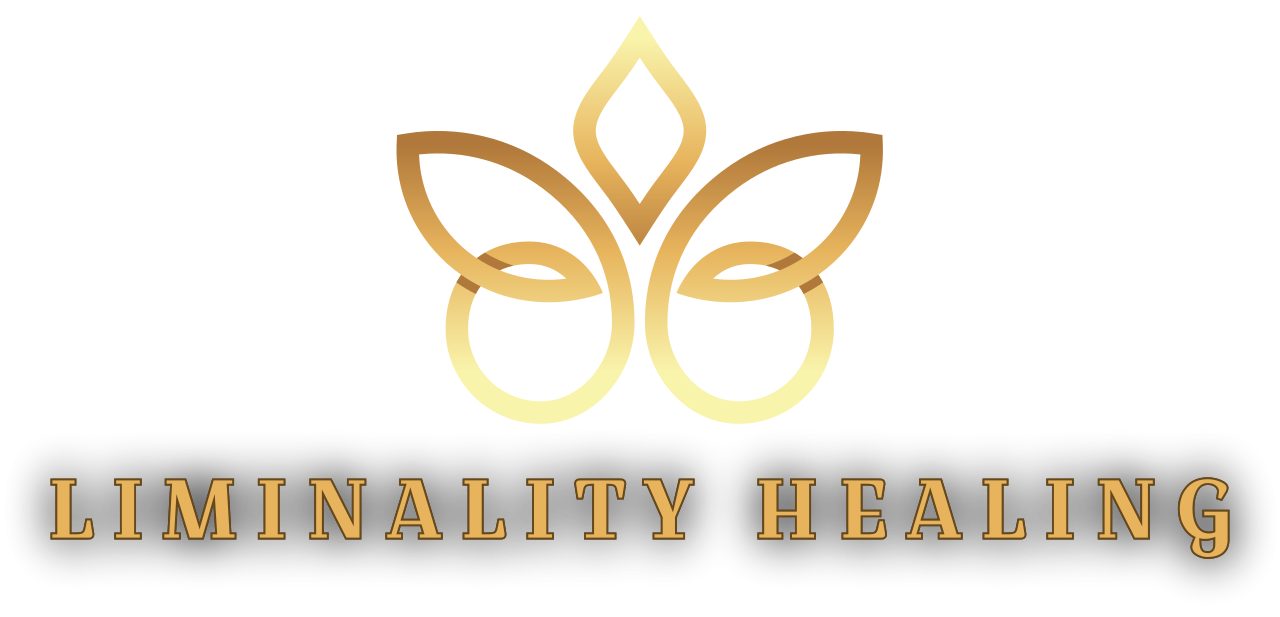
About Therapy
Embrace the concept of liminality…
The transformative space between what was and what’s yet to come. Therapy is a journey through this in-between space, where growth and healing unfold. This is where you pause, reflect, and recalibrate, guided by the belief that profound change happens when you give yourself permission to explore the possibilities ahead.
Therapeutic Approaches
A therapeutic approach encompasses the foundational theory and rationale behind the techniques and interventions employed in therapy. Explore how these evidence-based methods are integrated into our work, to effectively address specific emotional states and promote healing.
-
Philosophy and Goals: The humanistic approach centers on personal growth, self-actualization, and the innate resilience of individuals. It empowers clients to recognize their potential, take responsibility for their choices, and cultivate a deeper understanding of themselves, by fostering self-awareness and autonomy.
Techniques and Tools: Techniques often include reflective questioning, reframing narratives, and mindfulness. Therapists may also use exercises designed to encourage self-reflection, such as journaling and visualization.
Suitability: This approach is effective for individuals seeking increased self-awareness and a deeper understanding of themselves. It is often used to treat conditions like depression, anxiety, relationship issues, and trauma, especially when clients are seeking meaning and purpose in life.
Evidence and Effectiveness: Humanistic therapies, such as client-centered therapy (developed by Carl Rogers), have been supported by research showing positive outcomes in areas of self-esteem, emotional regulation, and personal fulfillment.
Duration and Structure: Humanistic therapy tends to be long-term, though the duration can vary depending on the individual’s needs. Sessions are typically unstructured, with the focus being on the client's experiences and emotions as they arise in the moment.
-
Potential Outcomes: Clients can expect greater self-awareness, self-acceptance, and emotional regulation, leading to an alignment with their values. Dependent on your dedication, therapy can foster authenticity, confidence, and a renewed sense of purpose.
Challenges or Limitations: Some clients may find the open-ended nature of humanistic therapy challenging if they seek more directive or solution-focused guidance. Additionally, it may not always be effective for clients who need specific interventions for more severe mental health conditions.
Client’s Role: Clients are expected to actively engage in the therapeutic process, be open to self-reflection, and take responsibility for their own growth. The therapy relies heavily on the client’s willingness to explore and express themselves authentically.
Therapist’s Role: The therapist in humanistic therapy is viewed as a supportive guide, providing a safe and empathetic space for the client. They practice active listening, offer unconditional positive regard, and help the client explore their thoughts, emotions, and desires without judgment.
Humanistic Therapy
-
Philosophy and Goals: CBT is based on the principle that our thoughts, feelings, and behaviors are interconnected. The goal is to help individuals identify and challenge distorted or negative thinking patterns and replace them with more realistic, and balanced thoughts.
Techniques and Tools: CBT uses a range of evidence-based techniques, including cognitive restructuring (challenging and changing negative thoughts), behavioral activation (encouraging clients to engage in positive activities), thought records (tracking thoughts and emotions), and exposure therapy (gradual exposure to feared situations). Clients may also use relaxation techniques, mindfulness practices, and problem-solving strategies.
Suitability: CBT is effective for a wide range of mental health conditions, including anxiety, depression, PTSD, OCD, and phobias. It is particularly useful for clients who want a structured, goal-oriented approach with practical tools for managing their mental health.
Evidence and Effectiveness: CBT has been extensively researched and is considered one of the most effective therapeutic approaches, particularly for treating anxiety and depression. Studies have shown that CBT can lead to lasting improvements in symptom management and coping skills.
Duration and Structure: CBT is typically short-term, often ranging from 8 to 20 sessions, depending on the individual’s needs and goals. Sessions are structured, with each session building on the previous one. Homework assignments are common and are used to reinforce learning and encourage clients to practice techniques outside of therapy.
-
Potential Outcomes: CBT can lead to significant and long-lasting improvements in mood and overall functioning. Clients often gain practical coping skills, better emotional regulation, and a more positive outlook on life.
Challenges or Limitations: CBT can be challenging for clients who have difficulty identifying their thoughts or engaging in the structured nature of the approach. It may also be less effective for individuals dealing with complex trauma or those who prefer a more exploratory or emotional focus in therapy.
Client’s Role: Clients in CBT are active participants. They are encouraged to reflect on their thoughts, behaviors, and feelings, and to complete assignments outside of therapy. The more engaged and committed a client is to the process, the more likely they are to see significant improvements.
Therapist’s Role: In CBT, the therapist acts as a guide and educator, helping the client identify and challenge unhelpful thoughts, teaching coping strategies, and providing tools to manage emotions and behaviors.
Cognitive Behavioral Therapy
-
Philosophy and Goals: Holistic therapy takes a whole-person approach to mental health, focusing not only on the mind but also on the body and spirit. The goal is to promote overall well-being by addressing the root causes of distress rather than just alleviating symptoms. It emphasizes balance, self-awareness, and healing from within.
Techniques and Tools: Holistic therapy combines traditional therapeutic techniques with alternative healing practices. This might include mindfulness, breath work, meditation, yoga, and nutrition counseling. The approach often integrates both conventional psychological strategies (like talk therapy) and body-based techniques that help release emotional blockages and promote healing.
Suitability: Holistic therapy is well-suited for clients who are open to exploring multiple dimensions of health, such as emotional, physical, spiritual, and mental well-being. It can be effective for people dealing with chronic stress, anxiety, depression, trauma, and life transitions, particularly those who are interested in a more integrative approach.
Evidence and Effectiveness: Holistic therapy integrates evidence-based practices to reduce anxiety, depression, and stress while enhancing emotional regulation and neuroplasticity. Exercise and nutrition boost mood, resilience, and cognitive function, while mindfulness, breathwork, and meditation activate the parasympathetic nervous system, promoting relaxation and focus. Research supports these interconnected practices in improving both emotional and physical well-being.
Duration and Structure: The duration of holistic therapy varies depending on the client’s needs and goals. It may involve weekly sessions, and the length of therapy can range from a few months to ongoing practice. The integration of lifestyle changes (such as diet or exercise routines) and mindfulness practices are often encouraged outside of sessions for lasting impact.
-
Potential Outcomes: The outcomes of holistic therapy are not just limited to symptom relief but can include an overall improvement in life satisfaction, physical health, emotional balance, and spiritual connection. Holistic therapy can foster a deeper connection with oneself and the world, as well as lasting personal transformation.
Challenges or Limitations: Clients who are skeptical of non-traditional healing methods may struggle to engage with certain aspects of holistic therapy. Additionally, because of it integrative nature, it may require more effort and commitment from the client to incorporate new practices into their daily life.
Client’s Role: The client plays an active role in holistic therapy by being open to exploring and engaging with various therapeutic practices. Clients are encouraged to reflect on their overall well-being and make lifestyle changes as needed such as improving diet, engaging in physical activity, or practicing mindfulness.
Therapist’s Role: The therapist in holistic therapy provides a safe space for the client to explore emotional, physical, and spiritual issues and may recommend complementary practices to enhance healing. The therapist often uses an integrative approach, encouraging the client to view their struggles from multiple perspectives.
Holistic Therapy
-
Philosophy and Goals: Culturally Responsive therapy emphasizes the importance of understanding and integrating a client’s cultural context into therapy. The core belief is that therapy should create a safe and inclusive space where clients feel understood and supported, by acknowledging and honoring a person’s cultural identity, values, and experiences.
Techniques and Tools: The approach incorporates various tools, such as culturally relevant assessments, broaching, and open dialogue. Therapists may use storytelling or explore cultural traditions to further understand their influence on behavior, identity, and challenges.
Suitability: This approach is particularly effective for clients from diverse cultural backgrounds, including those dealing with acculturation stress, identity struggles, or discrimination. It helps clients navigate and resolve issues by understanding how their culture intersects with mental health challenges.
Evidence and Effectiveness: Research supports the effectiveness of culturally responsive therapy in improving therapeutic outcomes for clients from marginalized and minority communities. Studies show that culturally attuned therapy leads to higher engagement, trust, and overall satisfaction.
Duration and Structure: Cultural responsiveness and competency is a foundational and ongoing part of the therapeutic process. This means continuously integrating awareness, sensitivity, and adaptability to honor each client’s unique background.
-
Potential Outcomes: Clients can expect a deeper understanding of how their cultural identity shapes their emotional experiences and mental health. This can lead to greater self-acceptance, improved coping strategies, and enhanced resilience in dealing with challenges related to culture, identity, and social issues.
Challenges or Limitations: Clients from cultures with limited familiarity with therapy may need additional support in engaging with the therapeutic process. Questions are always welcomed and its the therapist role to ensure you feel comfortable and supported.
Client’s Role: The client is encouraged to share their cultural experiences and beliefs openly. Active participation is essential for building rapport and trust in therapy. Clients may also be invited to reflect on the influence of their culture on their personal challenges and goals.
Therapist’s Role: The therapist in culturally responsive therapy acts as a facilitator, guide, and ally. They provide a non-judgmental space for exploration. The therapist’s role also includes educating themselves about the client’s cultural background and being open to learning from the client.
Culturally Responsive Therapy







